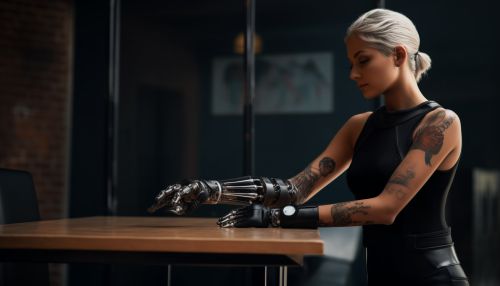The Role of Bionics in Prosthetic Development
Introduction
Bionics, a field that merges biology and electronics, has played a significant role in the development of prosthetic devices. Prosthetics, artificial body parts used to replace limbs lost through trauma, disease, or congenital conditions, have evolved significantly due to advancements in bionic technology. This article explores the role of bionics in prosthetic development, focusing on the scientific and technological advancements that have shaped the field.


Bionics and Prosthetics: An Overview
Bionics involves the study of biological systems to develop artificial systems that mimic or replicate their functions. In the context of prosthetics, bionic technology has been used to create artificial limbs that not only replace the physical structure of lost limbs but also replicate their functionality to a large extent. This is achieved through the use of sensors, microprocessors, and actuators, which work together to mimic the movements and functions of natural limbs.
The Evolution of Bionic Prosthetics
The development of bionic prosthetics has been a gradual process, marked by significant technological advancements. Early prosthetics were simple devices that offered limited functionality. However, with the advent of bionics, prosthetics have evolved into sophisticated devices that offer a range of functions, closely mimicking natural limbs.
Early Prosthetics
Early prosthetics were rudimentary devices, often made of wood or metal. These prosthetics were primarily cosmetic, designed to replace the physical appearance of the lost limb but offering little in terms of functionality. Over time, prosthetics evolved to incorporate simple mechanical systems, such as hooks and springs, to provide basic functionality.
Introduction of Bionics
The introduction of bionics marked a significant turning point in the development of prosthetics. Bionic technology allowed for the development of prosthetics that could mimic the functionality of natural limbs. This was achieved through the use of sensors and actuators, which allowed the prosthetic to respond to the user's movements and intentions.
Modern Bionic Prosthetics
Modern bionic prosthetics are sophisticated devices that offer a range of functions. These prosthetics incorporate advanced sensors and microprocessors, which interpret signals from the user's residual limb to control the movements of the prosthetic. Some bionic prosthetics also incorporate feedback systems, which provide the user with sensory information, such as the feeling of touch or the position of the prosthetic in space.
Technological Components of Bionic Prosthetics
Bionic prosthetics are complex devices that incorporate a range of technological components. These components work together to provide the functionality of the prosthetic.
Sensors
Sensors are a key component of bionic prosthetics. They detect signals from the user's residual limb, which are then interpreted by the prosthetic's microprocessor. There are various types of sensors used in bionic prosthetics, including electromyographic (EMG) sensors, which detect electrical signals from the muscles, and force sensors, which measure the force exerted by the user on the prosthetic.
Microprocessors
Microprocessors are the 'brain' of the bionic prosthetic. They interpret the signals detected by the sensors and control the movements of the prosthetic accordingly. Microprocessors in bionic prosthetics are often programmed with algorithms that mimic the movements of natural limbs, allowing for a more natural and intuitive control of the prosthetic.
Actuators
Actuators are the components that physically move the prosthetic. They are controlled by the microprocessor and respond to the user's intentions as detected by the sensors. Actuators in bionic prosthetics can be electric motors, pneumatic systems, or hydraulic systems.
Feedback Systems
Some bionic prosthetics incorporate feedback systems, which provide the user with sensory information. This can include the feeling of touch, the position of the prosthetic in space, or the force exerted by the prosthetic. Feedback systems can enhance the functionality of the prosthetic and make it feel more 'natural' to the user.
Future of Bionic Prosthetics
The field of bionic prosthetics continues to evolve, with ongoing research and development aimed at improving the functionality and usability of these devices. Future advancements may include the development of prosthetics that can be controlled directly by the user's brain, the incorporation of more sophisticated feedback systems, and the development of prosthetics that can mimic the complex movements of natural limbs more accurately.
